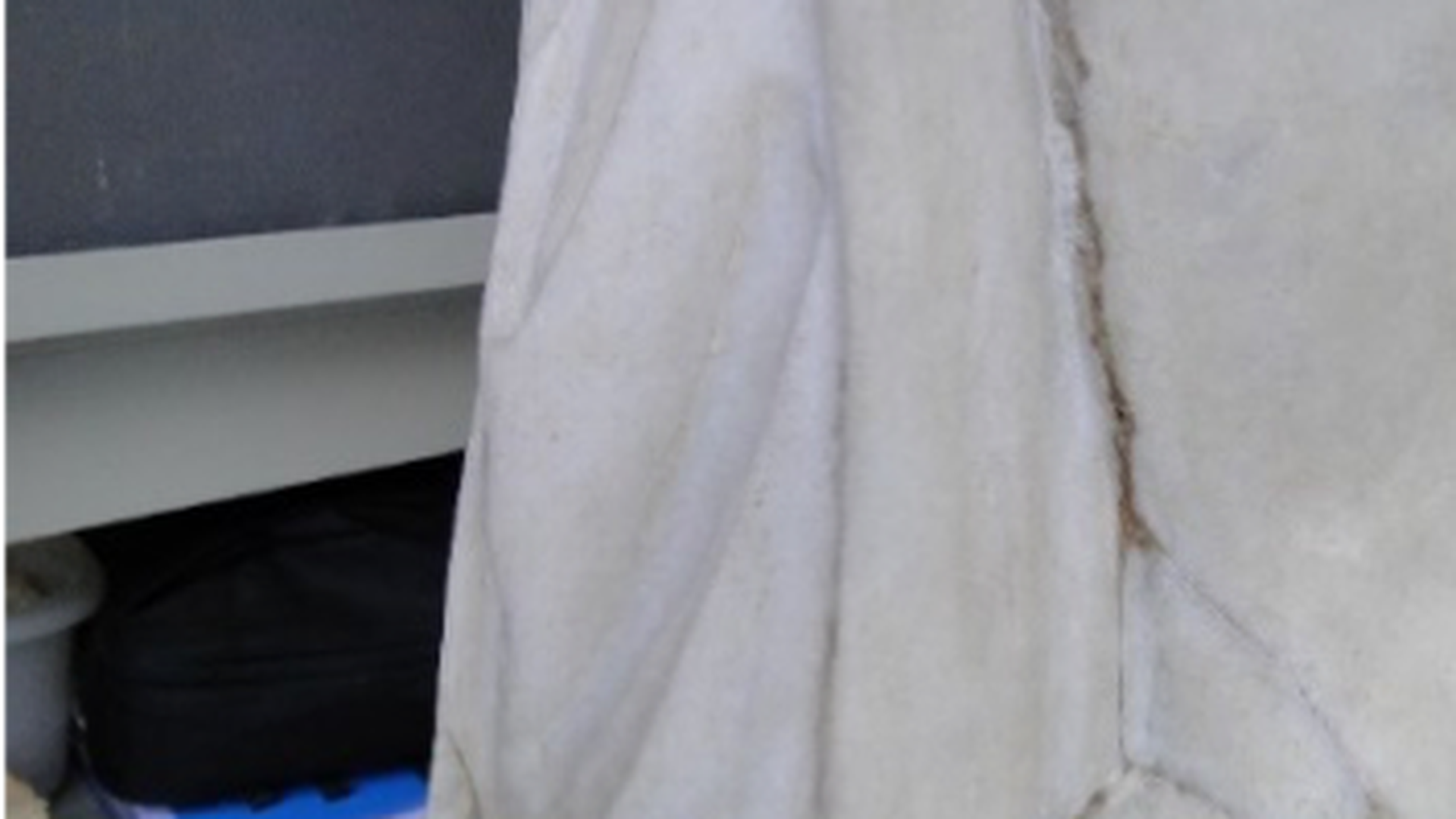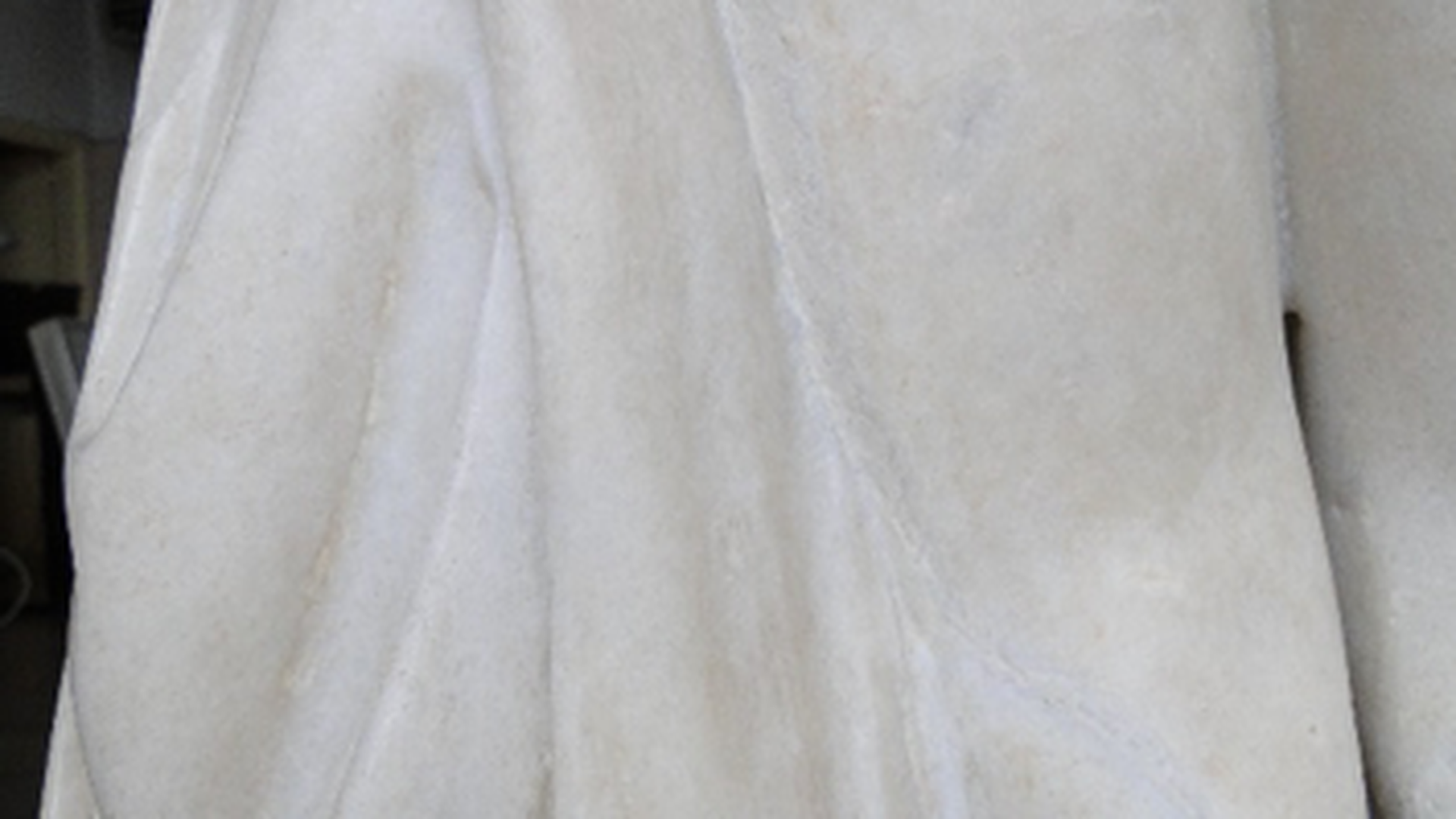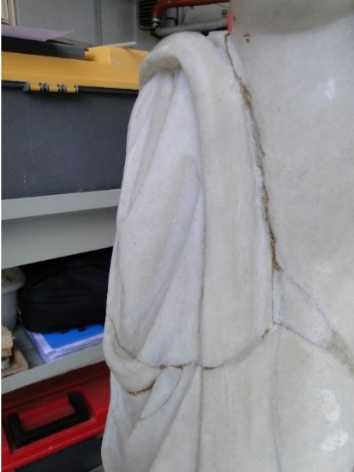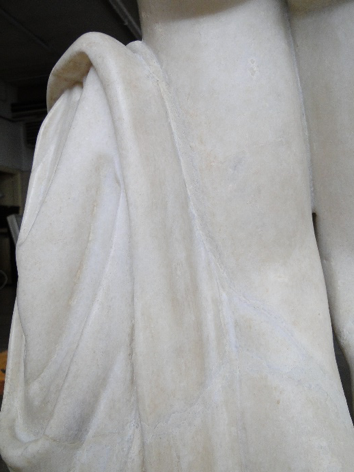The Three Graces
Artist: Unknown Roman
Date: Early 2nd century AD
Classification: Sculpture
Dimensions: Height 137 cm; width 116 cm; depth 41 cm.
Materials: Parian marble
Adopted By: The New York Chapter
Total Cost: € 20,000
Description
Congratulations - we did it! The PAVM launched its first-ever crowdfunding project on Giving Tuesday, and we successfully achieved our goal of $20,000. By promoting this communal restoration project through our PAVM Insiders Course, our web site, and other social media platforms, we were able to crowd raise the needed funding for the restoration of the Three Graces before 2020 concluded. Every donation counted. Thank you. We could not have done it without all of you!
The Three Graces - Aglaia, Euphrosyne, and Thalia - are the shining daughters of Zeus, companions of Aphrodite, and are the ancients who embody beauty, joy, and harmony. In the sculpture, they are naked in a harmonious embrace holding flowers, fruits, and seeds in their hands.
Created in the first decades of the second century A.D., this Vatican sculpture is by an anonymous Roman sculptor who used the work of an artist of the late Hellenistic age as their inspiration. The scientific research team in the Vatican assumes it is related to the sculptor Stephano and his circle, which contributed to the elaborate and cultured decorative program prepared in the temple of Venere Genitrice, inaugurated in the Forum of Caesar in 46 B.C.. This sculptural group entered the pontifical collections in 1817, sold by the antiquarian Pietro Vitali who had taken it over.
The restoration is ongoing and taking place in the Vatican Museums Marble Restoration Laboratory under the supervision of director Guy Devreux and the preservation of restorer Anna Lea Mattozzi. They have been performing the technological and historical preservation methods through scientific analysis to determine how to control the state of the marble and mend the small fissures. Stay tuned for more restoration updates!
A special thank you to the very generous donations from Robin Hambro, Mario Minotti, Robert and Barbara Weinberg, Diane Whitty, Debra, and Tom Mauro, and Julie Hurley.
Be on the lookout for another crowdfunding restoration project this February.
Detail
Inventory N°: 810
Artist: Unknown Roman
Date: Early 2nd century AD
Dimensions: Height 137 cm; width 116 cm; depth 41 cm.
Materials: Parian marble
Department:
Greek and Roman AntiquitiesLaboratories:
Stone MaterialsTotal Cost
€ 20,000
Three Graces - Final Restoration Report


The splendid sculpture, exhibited in the Cabinet of the Masks, was burdened by a blanket of uniform conspicuous deposits that affected the nature of the stone material. Since the first cleaning tests, restorers tried to remove the layers of gray deposits and conserve the ancient waxes present on the work.
Once the restorers identified the chemical agent that allowed the desired level to be reached, a much brighter and almost ebony effect gradually emerged from the marble.
The cleaning highlighted traces of polychrome on the hair that have been subjected to scientific investigations by the Cabinet of Diagnostics of Prof. Santamaria. The sculptural group presented numerous problems related to the fragmentary nature of its structure. It had numerous blocks held together by a natural adhesive used in ancient times that proved effective thanks to a consolidation carried out before the plastering phase.

The Three Graces

Details
Adopted by: The New York Chapter
Patrons: Robin Hambro
Inventory: 810
Artist: Unknown Roman
Date: Early 2nd century AD
Classification: Sculpture
Materials: Parian marble
Dimensions: Height 137 cm; width 116 cm; depth 41 cm.
Department: Greek and Roman Antiquities
Laboratory: Stone Materials
Description
Congratulations - we did it! The PAVM launched its first-ever crowdfunding project on Giving Tuesday, and we successfully achieved our goal of $20,000. By promoting this communal restoration project through our PAVM Insiders Course, our web site, and other social media platforms, we were able to crowd raise the needed funding for the restoration of the Three Graces before 2020 concluded. Every donation counted. Thank you. We could not have done it without all of you!
The Three Graces - Aglaia, Euphrosyne, and Thalia - are the shining daughters of Zeus, companions of Aphrodite, and are the ancients who embody beauty, joy, and harmony. In the sculpture, they are naked in a harmonious embrace holding flowers, fruits, and seeds in their hands.
Created in the first decades of the second century A.D., this Vatican sculpture is by an anonymous Roman sculptor who used the work of an artist of the late Hellenistic age as their inspiration. The scientific research team in the Vatican assumes it is related to the sculptor Stephano and his circle, which contributed to the elaborate and cultured decorative program prepared in the temple of Venere Genitrice, inaugurated in the Forum of Caesar in 46 B.C.. This sculptural group entered the pontifical collections in 1817, sold by the antiquarian Pietro Vitali who had taken it over.
The restoration is ongoing and taking place in the Vatican Museums Marble Restoration Laboratory under the supervision of director Guy Devreux and the preservation of restorer Anna Lea Mattozzi. They have been performing the technological and historical preservation methods through scientific analysis to determine how to control the state of the marble and mend the small fissures. Stay tuned for more restoration updates!
A special thank you to the very generous donations from Robin Hambro, Mario Minotti, Robert and Barbara Weinberg, Diane Whitty, Debra, and Tom Mauro, and Julie Hurley.
Be on the lookout for another crowdfunding restoration project this February.
Media

The Three Graces - Front

The Three Graces

The Three Graces - Faces

The Three Graces - Detail

The Three Graces - Detail 1

The Three Graces - Detail 2

The Three Graces - Detail 3

The Three Graces - Detail Foot

The Three Graces - Restorer at work

The Three Graces - Restoration Detail

The Three Graces - Restoration Detail 1
Restorations Update: Three Graces - Final Restoration Report

The splendid sculpture, exhibited in the Cabinet of the Masks, was burdened by a blanket of uniform conspicuous deposits that affected the nature of the stone material. Since the first cleaning tests, restorers tried to remove the layers of gray deposits and conserve the ancient waxes present on the work.
Once the restorers identified the chemical agent that allowed the desired level to be reached, a much brighter and almost ebony effect gradually emerged from the marble.
The cleaning highlighted traces of polychrome on the hair that have been subjected to scientific investigations by the Cabinet of Diagnostics of Prof. Santamaria. The sculptural group presented numerous problems related to the fragmentary nature of its structure. It had numerous blocks held together by a natural adhesive used in ancient times that proved effective thanks to a consolidation carried out before the plastering phase.


© 2025 Patrons of the Arts
in the Vatican Museums
Vatican Museums V-00120,
Vatican City State (Europe)
+39 0669864499
